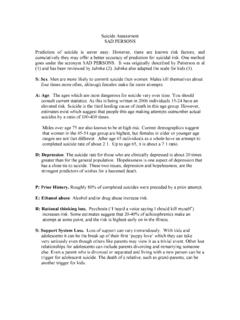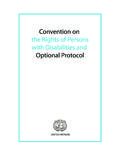Transcription of GLOBAL REPORT ON TRAFFICKING IN PERSONS
1 2012 GLOBAL REPORT ON TRAFFICKING IN PERSONSUNITED NATIONSNew York, 2012 GLOBAL REPORT onTrafficking in Persons2012 UNITED NATIONS OFFICE ON DRUGS AND CRIME Vienna United Nations, December 2012. All rights reserved : 978-92-1-130309-4e-ISBN: 978-92-1-055896-9 United Nations publication, Sales No. publication may be reproduced in whole or in part and in any form for educational or non-profit purposes without special permission from the copyright holder, provided acknowledgement of the source is made. UNODC would appreciate receiving a copy of any publication that uses this publica-tion as a citation: UNODC, GLOBAL REPORT on TRAFFICKING in PERSONS 2012 (United Nations publication, Sales No. ). No use of this publication may be made for resale or any other commercial purpose whatsoever without prior permission in writing from the United Nations Office on Drugs and Crime.
2 Applications for such permission, with a statement of purpose and intent of the reproduction, should be addressed to UNODC, GLOBAL REPORT on TRAFFICKING in PERSONS content of this publication does not necessarily reflect the views or poli-cies of UNODC or contributory organizations, nor does it imply any designations employed and the presentation of material in this publica-tion do not imply the expression of any opinion whatsoever on the part of UNODC concerning the legal status of any country, territory, area, city or its authorities, or concerning the delimitation of its frontiers or on uniform resource locators and links to Internet sites con-tained in the present publication are provided for the convenience of the reader and are correct at the time of issue. The United Nations takes no responsibility for the continued accuracy of that information or for the con-tent of any external publication has not been formally : Alessandro Scotti, on the REPORT are welcome and can be sent to: GLOBAL REPORT on TRAFFICKING in PERSONS UnitResearch and Trend Analysis BranchDivision for Policy Analysis and Public AffairsUnited Nations Office on Drugs and CrimePO Box 5001400 Vienna AustriaTel: (+43) 1 26060 0 Fax: (+43) 1 26060 5827E-mail: Human TRAFFICKING is a crime that ruthlessly exploits women, children and men for numerous purposes includ-ing forced labour and sex.
3 This GLOBAL crime generates billions of dollars in profits for the traffickers. The Inter-national Labour Organization estimates that million people are victims of forced labour globally. This estimate also includes victims of human TRAFFICKING for labour and sexual exploitation. While it is not known how many of these victims were trafficked, the estimate implies that currently, there are millions of TRAFFICKING in PERSONS vic-tims in the world. Human TRAFFICKING requires a forceful response founded on the assistance and protection for victims, rigorous enforcement by the criminal justice system, a sound migration policy and firm regulation of the labour markets. However, if the international community is to achieve long-term successes in combating TRAFFICKING in PERSONS , we need reliable information on the offenders, the victims, and the TRAFFICKING flows throughout the regions.
4 The GLOBAL REPORT on TRAFFICKING in PERSONS 2012 provides such information, and explores this crime across the world. Although the officially reported information that forms the basis of this REPORT cannot be used to generate a GLOBAL estimate of the number of victims, it has shed light on the patterns and flows of human TRAFFICKING , in line with the request of Member States. The REPORT pro-vides a solid basis for understanding the GLOBAL nature of this form of modern slavery. Its findings are deeply troubling. According to the REPORT , at least 136 different nationali-ties were trafficked and detected in 118 different coun-tries. Human TRAFFICKING happens throughout the world with millions of victims falling through the cracks of their own societies only to be exploited by traffickers. They can be found in the world s restaurants, fisheries, brothels, farms and homes, among many other activities.
5 One of the most worrying trends is the increase in child victims. From 2003 2006, 20 per cent of all detected victims were children. Between 2007 and 2010, the per-centage of child victims had risen to 27 per cent. Traffick-ing originating from East Asia also remains the most conspicuous globally. Based on the REPORT , East Asian victims were found in 64 countries in all regions, and were often detected in large numbers. Another worrying aspect is the low conviction rates. According to the REPORT , the conviction rates for traffick-ing are at the same level as rare crimes such as homicides in Iceland or kidnappings in Norway. We, therefore, need to work harder at detecting and punishing this shameful criminal activity. Aside from these negative developments, there were some positive trends. By 2012, 134 countries and territories had enacted legislation criminalizing TRAFFICKING .
6 Indeed, the percentage of countries without an offence criminalizing this activity halved between 2008 and 2012. There is also evidence that TRAFFICKING from Eastern Europe and Central Asia has been declining since , the international community has the tools to confront this crime. The widespread ratification of the Protocol to Prevent, Suppress and Punish TRAFFICKING in Per-sons, Especially Women and Children is a success story. Cur-rently, 154 countries have ratified it. The Protocol is closely supported by the GLOBAL Plan of Action to Combat TRAFFICKING in PERSONS , which also established the Trust Fund for Victims of TRAFFICKING in PERSONS , Especially Women and Children to aid the victims. Although much has been achieved, gaps in knowledge remain. UNODC continues to need additional informa-tion about human TRAFFICKING . The REPORT is a stepping stone in the right direction, and it highlights the dedica-tion and commitment of Member States to tackle this crime, but I call on countries to do more.
7 We need com-prehensive data about offenders and victims in order to assist in the development of sound policies and appropri-ate criminal justice responses. Human TRAFFICKING is a widespread crime in the early 21st century, it cannot be allowed to continue into the 22nd century. Yury FedotovExecutive DirectorUnited Nations Office on Drugs and Crime2 Editorial and production teamThe GLOBAL REPORT on TRAFFICKING in PERSONS 2012 was produced under the supervision of Sandeep Chawla, UNODC Deputy Executive Director and Director, Division for Policy Analysis and Public Affairs. GLOBAL REPORT on TRAFFICKING in PERSONS UnitKristiina Kangaspunta (Chief ), Fabrizio Sarrica, Raggie TRAFFICKING and Migrant Smuggling Section (chapter 3)Ilias Chatzis (Chief ), Alexia and Threat Analysis Section (layout and production)Suzanne Kunnen, Kristina and Atelier de Cartographie de Sciences GLOBAL REPORT on TRAFFICKING in PERSONS Unit would like to thank Thibault Le Pichon (Chief ) and Anja Korenblik of the Studies and Threat Analysis Section for their valuable guidance and support, as well as Julia Kuzmits and Gaetano Lo Mastro for assistance with the data collection and data entry.
8 The REPORT also benefited from the work and expertise of many other UNODC staff members in Vienna and around the Key findings 7 Executive summary 9 Introduction 15I. PATTERNS AND FLOWS OF TRAFFICKING IN PERSONS : GLOBAL OVERVIEW A. TRAFFICKING PATTERNS: 25 VICTIMS, TRAFFICKERS AND FORMS OF EXPLOITATION 1. Victims: becoming vulnerable 252. Traffickers: abusing their power 283. Exploitation: the purpose of TRAFFICKING 34B. TRAFFICKING FLOWS: GLOBAL , LOCAL AND ACROSS ALL COUNTRIES 40 1. TRAFFICKING flows at the destination: where do the victims come from? 41 2. TRAFFICKING flows at the origin: where are victims trafficked to? 46 3. The case of domestic TRAFFICKING 49II. PATTERNS AND FLOWS OF TRAFFICKING IN PERSONS : REGIONAL OVERVIEW A. EUROPE AND CENTRAL ASIA 531. Victims of TRAFFICKING in Europe and Central Asia 53 2.
9 Traffickers in Europe and Central Asia 54 3. Forms of exploitation in Europe and Central Asia 554. TRAFFICKING flows in Europe and Central Asia 57 B. THE AMERICAS 61 1. Victims of TRAFFICKING in the Americas 61 2. Traffickers in the Americas 623. Forms of exploitation in the Americas 634. TRAFFICKING flows in the Americas 64C. SOUTH AND EAST ASIA AND THE PACIFIC 69 1. Victims of TRAFFICKING in South Asia, East Asia and the Pacific 69 2. Traffickers in South Asia, East Asia and the Pacific 70 3. Forms of exploitation in South Asia, East Asia and the Pacific 71 4. TRAFFICKING flows in South Asia, East Asia and the Pacific 71 D. AFRICA AND THE MIDDLE EAST 741. Victims of TRAFFICKING in Africa and the Middle East 74 2. Traffickers in Africa and the Middle East 753. Forms of exploitation in Africa and the Middle East 76 4. TRAFFICKING flows in Africa and the Middle East 77 III GLOBAL RESPONSES: COMMITMENT TO COMBATING TRAFFICKING IN PERSONSA.
10 STATUS OF IMPLEMENTATION OF THE TRAFFICKING IN PERSONS PROTOCOL 82 FOCUS ON CRIMINALIZATION 1. Legislation 822. Criminal justice response convictions 84 B. CHALLENGES TO THE IMPLEMENTATION OF COMPREHENSIVE RESPONSES 88 TO TRAFFICKING IN PERSONS 1. Lack of knowledge and research 892. Lack of capacity 903. Lack of monitoring and evaluation 90 GLOBAL REPORT ON TRAFFICKING IN PERSONS 20124C. ADDRESSING THE CHALLENGES THE GLOBAL PLAN OF ACTION 91D. MEASURING THE IMPACT OF ANTI- TRAFFICKING EFFORTS 95 Text boxes TRAFFICKING in organs and muti practices 39 Do economic dynamics affect TRAFFICKING in PERSONS ? 44 Estimating the severity of TRAFFICKING 68 The way forward for research on TRAFFICKING in PERSONS at the national, regional and 80 international levels The UNODC Model Law against TRAFFICKING in PERSONS 85 The UNODC Human TRAFFICKING Case law database 87 The United Nations GLOBAL Plan of Action to Combat TRAFFICKING in PERSONS 92 Compensation for victims of TRAFFICKING in PERSONS 94 FIGURESFIG.
















